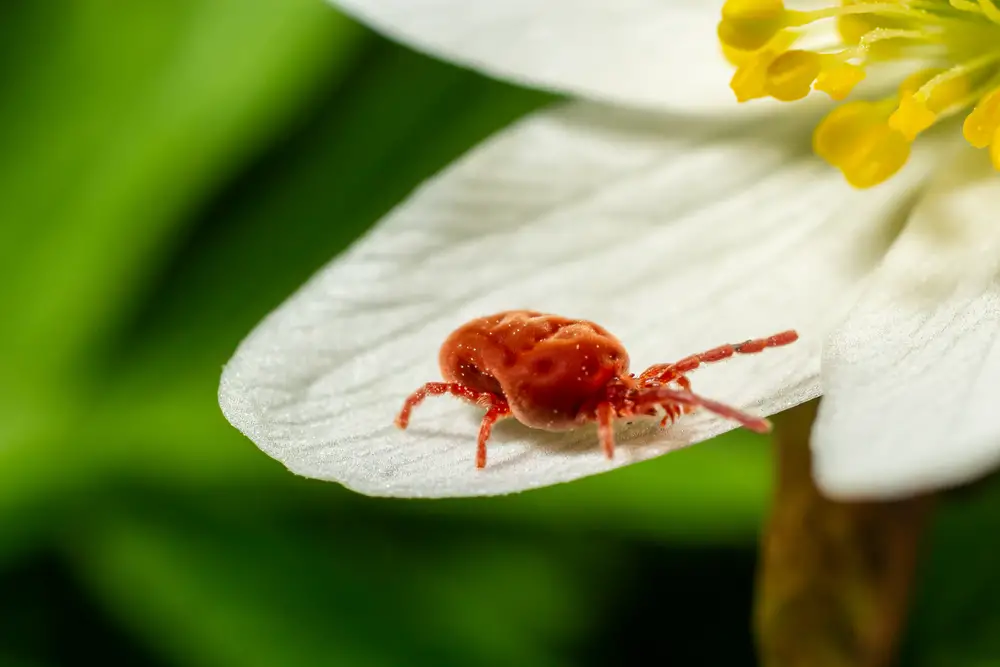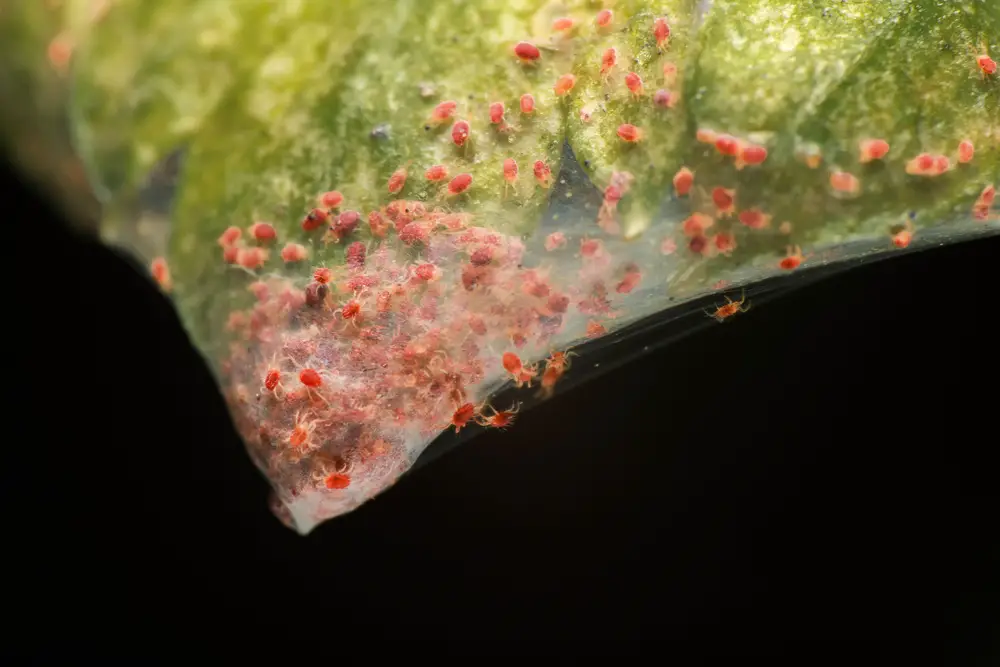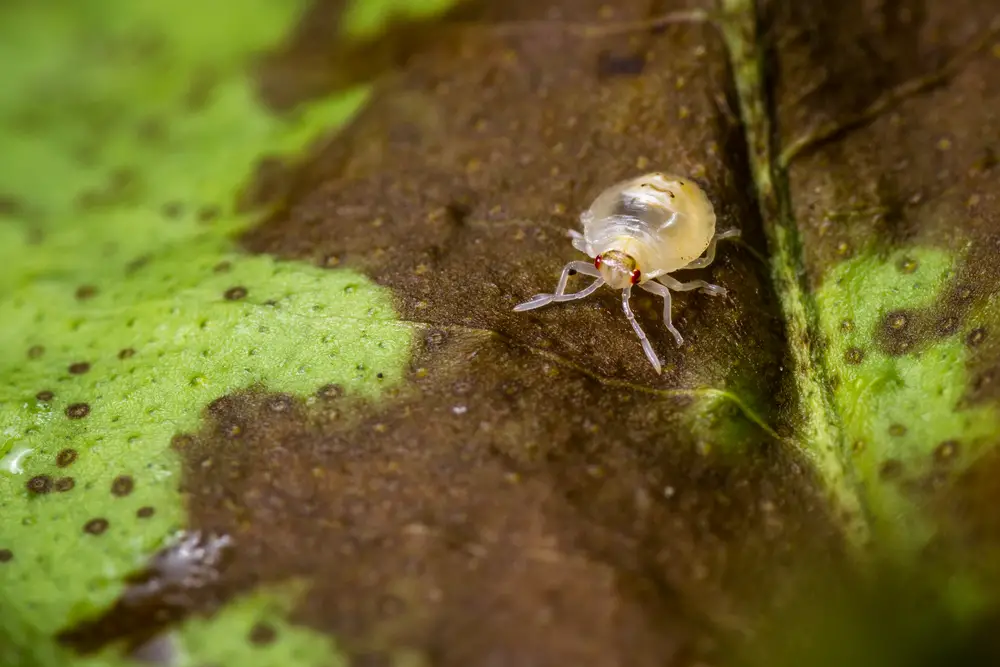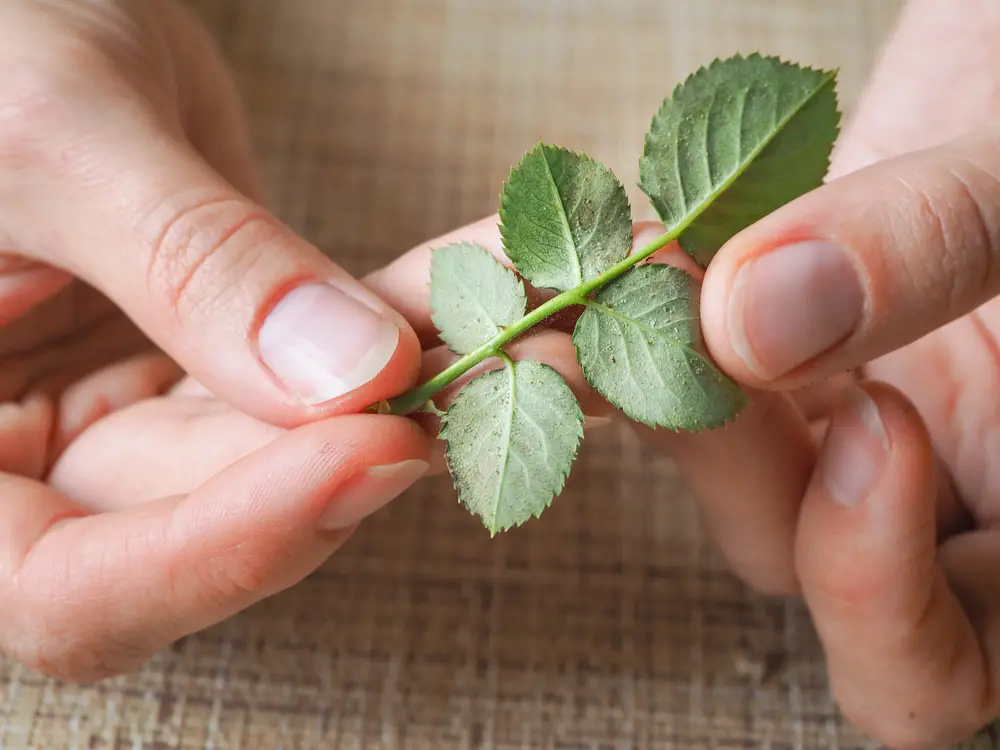Ah, the bane of every plant lover’s existence—spider mites. These minuscule creatures may be small, but they pack a punch when it comes to wreaking havoc on our beloved greenery.
But have you ever wondered: can these eight-legged nuisances actually survive without their leafy hosts? It’s not just a hypothetical question; the answer could change the way we approach plant care and pest control.
Quick Answer:
Spider mites rely on plants for survival and cannot thrive without them. They may live for a brief period, usually one to two weeks, without a plant host. However, they cannot reproduce and will eventually die if they don’t find a new plant to feed on. Therefore, plants are essential for their long-term survival.
If the mystery of spider mite survival has ever piqued your curiosity, or if you’re just desperate to find a solution to protect your plants, you’ve landed in the right place.
In this article, we’re diving deep into the world of spider mites. We’ll explore their life cycles, dependencies, and the conditions under which they either thrive or falter.
Understanding Spider Mites

Spider mites are tiny pests that belong to the arachnid family. They are closely related to spiders and ticks and are known for their ability to cause damage to plants.
Spider mites feed on the sap of plants, which can cause leaves to turn yellow, brown, or even fall off. They are a common problem for gardeners and farmers and can be difficult to control.
There are many different types of spider mites, but one of the most common is the two-spotted spider mite (Tetranychus urticae). This species is found all over the world and is known for its ability to reproduce quickly.
Adult spider mites are usually less than 1 mm in size and can be difficult to see with the naked eye.
Male and female spider mites look similar, but females can lay up to 100 eggs in their lifetime. These eggs hatch into larvae, which then develop into nymphs and eventually become adult spider mites. The entire life cycle of a spider mite can take as little as 5 days, which means they can quickly become a problem for plants.
While spider mites are known for their ability to cause damage to plants, it is less clear whether they can survive without plants.
Some species of spider mites, such as the spruce spider mite, are known to overwinter on trees and shrubs. However, most spider mites are dependent on plants for food and shelter.
Spider Mites and Plants
Spider mites are tiny pests that can cause significant damage to plants. They are known to feed on the sap of plants, which can cause leaves to turn yellow and eventually die.
Spider mites are known to be a common pest in both indoor and outdoor plants, and they can be particularly damaging to houseplants.
Spider mites feed on a wide range of plants, including vegetables, flowers, fruits, and many species of plants. They are known to be particularly damaging to tomatoes, which can be a favorite food source for these pests.
Spider mites are also known to be a common problem in greenhouses, where they can quickly spread from one plant to another.
One of the most significant problems with spider mites is that they can reproduce quickly, which can make it challenging to control their population. They can also survive for a short period without plants, but they need a food source to thrive.
Therefore, it is unlikely that spider mites can live for an extended period without plants.
Life Cycle of Spider Mites
Spider mites, also known as web-spinning mites, are tiny arachnids that belong to the Tetranychidae family.
They are common pests of plants and can cause significant damage to crops and gardens. Understanding their life cycle is crucial for effective pest control.
Spider mites lay eggs on the undersides of leaves. These eggs are spherical and range in color from translucent to pale yellow. The female spider mite can lay up to 20 eggs per day and up to 200 eggs during her lifetime.
The eggs hatch into larvae, which have six legs and are pale in color. The larvae then molt into protonymphs, which have eight legs and are still pale in color. The protonymphs then molt into deutonymphs, which are darker in color and have eight legs.
During the deutonymph stage, the spider mites become sexually mature and can reproduce. The deutonymphs mate and the females lay eggs, starting the cycle again.
The life cycle of spider mites can be completed in as little as a week under ideal conditions, such as warm temperatures and high humidity. However, under less favorable conditions, such as low temperatures or dry environments, the life cycle can take longer.
Signs of Spider Mite Infestation

Spider mites are tiny pests that can cause significant damage to plants. They are difficult to see with the naked eye, but there are several signs that can indicate their presence. Here are some of the most common signs of spider mite infestation:
- Yellow spots: Spider mites feed on plant sap, which can cause yellow spots to appear on leaves. These spots may be small at first, but they can grow larger over time.
- Webbing: Spider mites produce silk webs that they use for protection and to help them move around. These webs may appear as a fine layer over the leaves or as thick, protective silk webs that cover entire branches.
- Stunted growth: If a plant is infested with spider mites, it may not grow as well as it should. This can be due to the damage caused by the mites, as well as the stress that the plant is under.
- Wilting: Spider mites can cause leaves to wilt and die. This can be due to the damage that they cause to the plant’s vascular system, which can prevent water and nutrients from reaching the leaves.
- Visible mites: In severe infestations, it may be possible to see the spider mites themselves. They are very small, but they can be seen with a magnifying glass or microscope.
If you notice any of these signs on your plants, it is important to take action to control the infestation.
Spider mites can reproduce rapidly, so early detection and treatment is key to preventing further damage.
Environmental Factors
Spider mites are small arachnids that can be found in a wide range of environments. While they are commonly associated with plants, they can also survive without them, albeit for a limited period.
The environmental factors that affect spider mites’ survival without plants are discussed below.
Temperature
Spider mites are cold-blooded creatures, and their activity level is directly influenced by temperature. They prefer warm and dry conditions, typically between 70-80°F, but they can survive in temperatures ranging from 40-100°F.
However, extreme temperatures, especially below freezing, can be lethal to spider mites.
Humidity
Humidity is another crucial factor that affects spider mites’ survival. They thrive in dry conditions, with relative humidity ranging from 40-60%.
In contrast, high humidity levels can impede their activity and reproduction. Spider mites can survive in low-humidity conditions for a limited period, but prolonged exposure can lead to dehydration and death.
Water
Spider mites require water to survive, but they can obtain it from various sources. They can absorb moisture from the air, plant sap, or dew.
However, they cannot survive in standing water or excessively wet conditions, as it can lead to fungal growth and other pathogens.
Winter Months
During the winter months, spider mites can enter a state of diapause, a type of hibernation, to survive the cold temperatures and lack of food.
However, prolonged exposure to freezing temperatures can be lethal, and they may require a warm environment to survive.
Environmental Conditions
Spider mites can survive without plants, but their longevity depends on the environmental conditions.
Dry conditions and warm temperatures are favorable for their survival, while high humidity and low temperatures can be detrimental. Additionally, spider mites can obtain water from various sources, but standing water can be lethal.
Spider Mites and Other Organisms

Spider mites are tiny arachnids that feed on the sap of plants. They are known to infest a wide range of plants, including vegetables, fruits, and ornamental plants. However, can spider mites live without plants?
The answer is no.
Spider mites need plants to survive, as they feed on the sap and tissues of plants.
While spider mites cannot survive without plants, they can still cause problems for other organisms. For example, pets and humans can develop allergic reactions to spider mites.
These reactions may include sneezing, coughing, and skin irritation. It is important to note that spider mites do not bite humans or pets, but their presence can still cause discomfort.
Natural predators, such as ladybugs, scorpions, and predatory mites, can help control spider mite populations. These predators feed on spider mites and can help keep their populations in check.
However, it is important to note that some predatory mites can also harm plants if their populations are too high.
Damage Caused by Spider Mites
Spider mites are tiny arachnids that feed on plant sap by piercing the epidermis of leaves, stems, and other plant parts.
They are notorious for causing significant damage to plants, which can result in stunted growth, yellowing leaves, and even death. Spider mites are particularly harmful to indoor plants, where they can quickly reproduce and spread to other plants.
When spider mites feed on a plant, they pierce the cell walls and suck out the sap. This can cause the plant to lose nutrients, which can lead to stunted growth and yellowing leaves.
In severe cases, the plant may even die. Spider mites can also cause damage to the protein layer on the undersides of leaves, which can make the plant more vulnerable to other pests and diseases.
One of the most noticeable signs of spider mite damage is the appearance of tiny, yellowish, or brown spots on the leaves. These spots can eventually merge to form larger patches, which can cause the leaves to turn yellow or brown and eventually fall off.
In addition to damaging the leaves, spider mites can also cause damage to the stems of plants, which can weaken the plant and make it more susceptible to other pests and diseases.
Overall, spider mites can cause significant damage to plants, and it is important to take steps to prevent and control infestations.
This can include regularly inspecting plants for signs of infestation, removing infested plants from the area, and using insecticidal soap or other treatments to control the mites.
By taking these steps, gardeners can help to protect their plants from the damaging effects of spider mites.
Preventing Spider Mite Infestation
Preventing spider mite infestation is the best way to avoid dealing with the problem of getting rid of spider mites.
Here are some tips to help prevent spider mites from infesting plants:
- Keep plants healthy: Healthy plants are less susceptible to spider mite infestations. Make sure to provide plants with adequate water, sunlight, and nutrients.
- Monitor plants regularly: Regularly inspect plants for signs of spider mites, including tiny webs, yellowing leaves, and stippling on leaves.
- Quarantine new plants: Before introducing new plants to your collection, quarantine them for a few weeks to ensure they are not carrying spider mites or other pests.
- Use natural predators: Introducing natural predators, such as ladybugs or predatory mites, can help control spider mite populations.
- Use insecticidal soap: Insecticidal soap can be effective in controlling spider mites, but it is important to follow the instructions carefully to avoid damaging plants.
- Avoid over-fertilizing: Over-fertilizing can weaken plants and make them more susceptible to spider mite infestations.
By following these tips, gardeners can help prevent spider mite infestations and keep their plants healthy and strong.
Treatment Options for Spider Mite Infestation
When it comes to treating spider mite infestations, there are several options available to growers. These treatments can be divided into two main categories: chemical and natural.
Chemical Pesticides
Chemical pesticides are a popular choice for many growers due to their effectiveness and convenience. Some common chemical pesticides used to treat spider mites include bifenthrin and other insecticides.
However, it is important to note that these pesticides can be harmful to the environment and other beneficial insects in the garden.
Natural Treatments
Natural treatments for spider mite infestations are becoming more popular among growers due to their safety and effectiveness. One such treatment is insecticidal soap, which works by suffocating the mites.
Neem oil and horticultural oils are also effective natural treatments, as they can disrupt the mites’ reproductive cycle and prevent them from laying eggs.
Other natural treatments include rosemary, coriander, and garlic, which can be used to create homemade sprays that repel spider mites.
Additionally, maintaining proper humidity levels and watering plants regularly can help prevent spider mite infestations from occurring in the first place.
Spider Mites in Specific Environments
Spider mites are tiny arachnids that feed on plants, but can they survive without plants? The answer is yes, spider mites can survive for a short period without plants, but they prefer to live on plants as their primary source of food.
Spider mites can be found in various environments, such as soil, shelter, and protection. In soil, spider mites can survive by feeding on fungi and other small organisms.
They can also survive in sheltered areas, such as cracks and crevices, where they can hide from predators and harsh weather conditions.
Spider mites can also survive in clothing and other materials that provide protection from the environment. They can attach themselves to clothing and be transported to other areas where they can infest new plants.
Therefore, it is essential to inspect clothing and other materials before moving them from infested areas to new locations.
In specific environments, such as greenhouses, spider mites can thrive and reproduce quickly due to the controlled environment and abundance of plants.
Greenhouses provide an ideal environment for spider mites to reproduce and spread, making it challenging to control infestations.
Miscellaneous Information About Spider Mites
Spider mites are tiny arachnids that belong to the Tetranychidae family. They are known for their ability to cause significant damage to plants, but can they live without plants?
Food Sources
Spider mites feed on the sap of plants, which is their primary food source. They prefer to feed on the undersides of leaves, where they are less likely to be disturbed.
However, spider mites can also feed on other insects, such as aphids and mealybugs, as well as plant debris.
Dormancy
Spider mites can enter a dormant state when conditions are unfavorable for their survival.
During dormancy, they reduce their metabolic rate and become inactive. Spider mites can remain dormant for several months, waiting for the right conditions to resume their activity.
Magnifying Glass
Spider mites are incredibly small, and it can be challenging to see them with the naked eye. A magnifying glass can be used to identify spider mites and determine the extent of an infestation.
Colors
Spider mites come in a range of colors, including red, green, and yellow. The color of a spider mite can vary depending on its age and the species of spider mite.
Cotton
Spider mites can produce webbing that looks similar to cotton. This webbing is used to protect their eggs and provide a barrier against predators.


